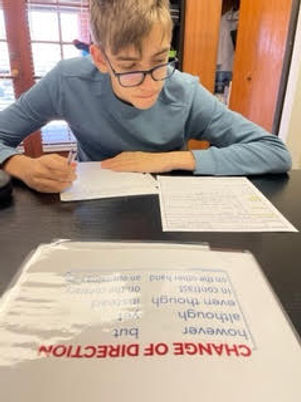Kathy Denious, M.Ed., C-SLCT
Learning Disabilities Specialist
dyslexia | dysgraphia | dyscalculia
support | educate| empower


Learning Research
"It's not just what you know, but how you practice what you know that determines how well the learning serves you later."
- Peter C. Brown in Make It Stick: The Science of Successful Learning
Evidence from research in cognitive psychology recommends six strategies for effective learning (for everyone but particularly for children with dyslexia):

Spaced Practice: Studies show that small bouts of learning spread over time generate much more learning than large doses at the last minute. For instance, five hours spent learning spread over two weeks is more effective than five hours the day before a test.
Retrieval Practice: Flashcards are one of the most common methods of retrieval practice, the process of pulling a fact, idea, or connection from one's memory. Retrieval practice is most effective when combined with spaced practice so that the learner is remembering facts and concepts, learned over the course of time, in multiple sessions.
Elaboration: Describing and explaining facts, concepts, and ideas in detail and exploring connections between new and known data creates a context for assimilating and remembering the new information.
Interleaving: Interleaving is switching between ideas while studying and covering them in a different order instead of spending giant chunks of time on any one concept or studying the same things in the same order.
Concrete Examples: Use specific examples and understand the link between them and the concept being studied. Relevant examples pulled from personal experience, linked to the concept at hand, provide an even better way of cementing the information in the memory.
Dual Coding: Adding visual representations and supplements to written and verbal lessons is proven to aid in comprehension, regardless of the subject matter. Early math might include cartoon apples to add and subtract instead of just the numbers. High school English might incorporate graphic organizers to help students understand the underlying structure of a text.